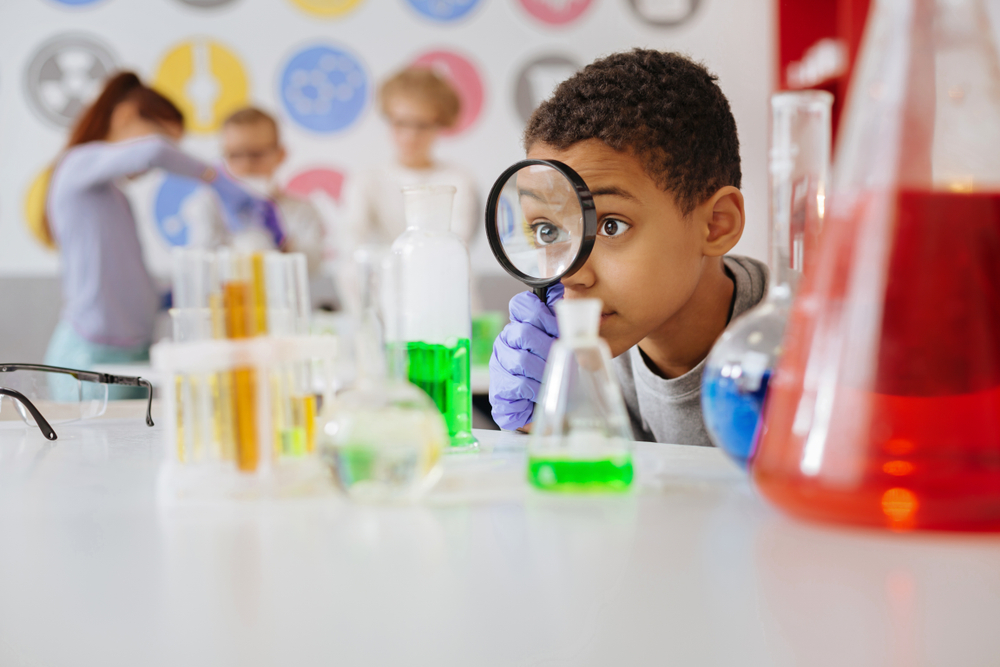Normal Reading Comprehension worksheets activities for Ages 4-7
9 filtered results
-
From - To
Discover engaging reading comprehension worksheets designed for children ages 4-7! Our carefully crafted activities enhance young learners' understanding of stories and texts while making learning fun. Each worksheet features age-appropriate prompts that encourage critical thinking, vocabulary-building, and analysis of narrative elements. Parents and educators can seamlessly integrate these exercises into daily lessons or use them as enjoyable homework assignments. By fostering essential reading skills early, children gain confidence and joy in exploring the world of literature. Explore our collection today and provide your child with the tools they need to become proficient readers and enthusiastic learners!
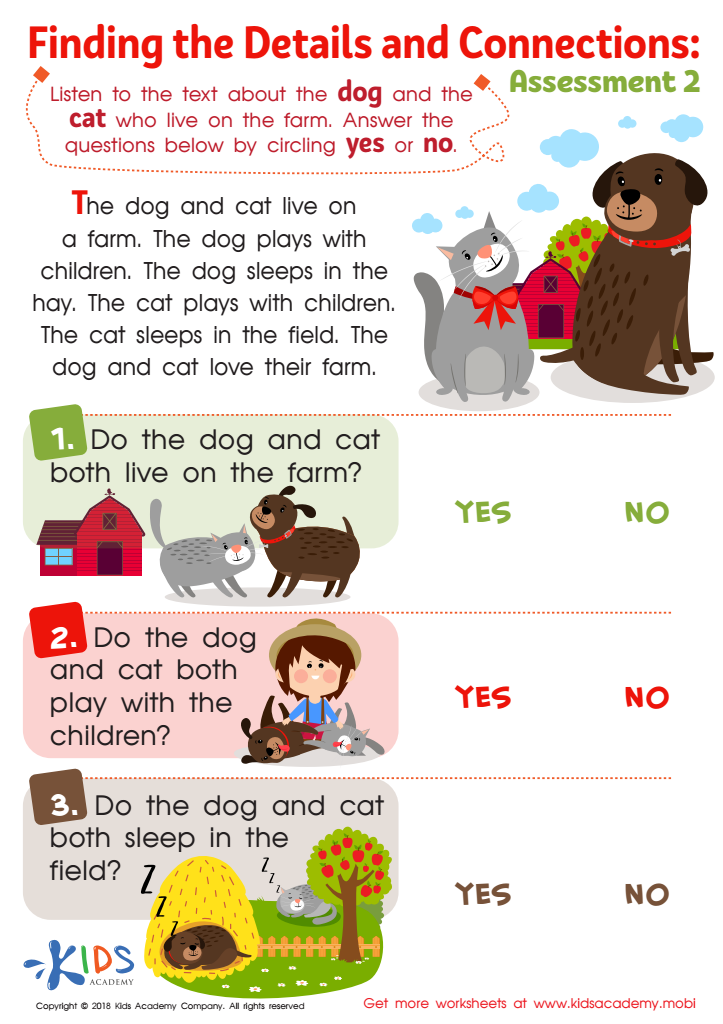

Finding the Details and Connections: Assessment 2 Worksheet


Questions About Informational Texts: Assessment 1 Worksheet


Craft and Structure: Assessment 2 Worksheet


Questions About Stories: Assessment 2 Worksheet
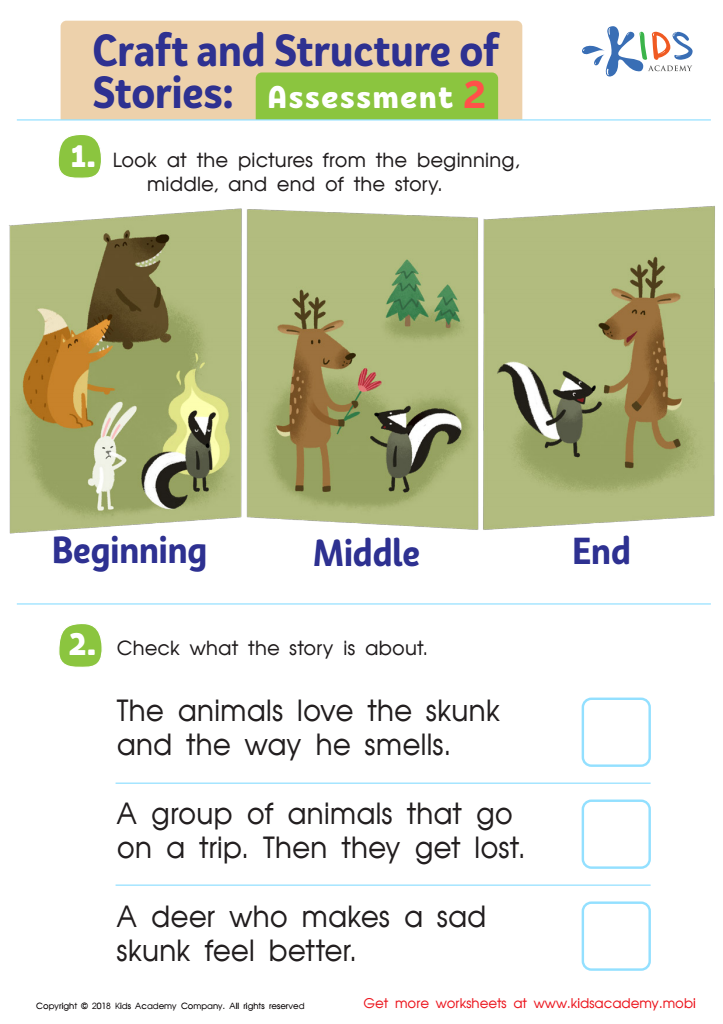

Craft and Structure of Stories: Assessment 2 Worksheet
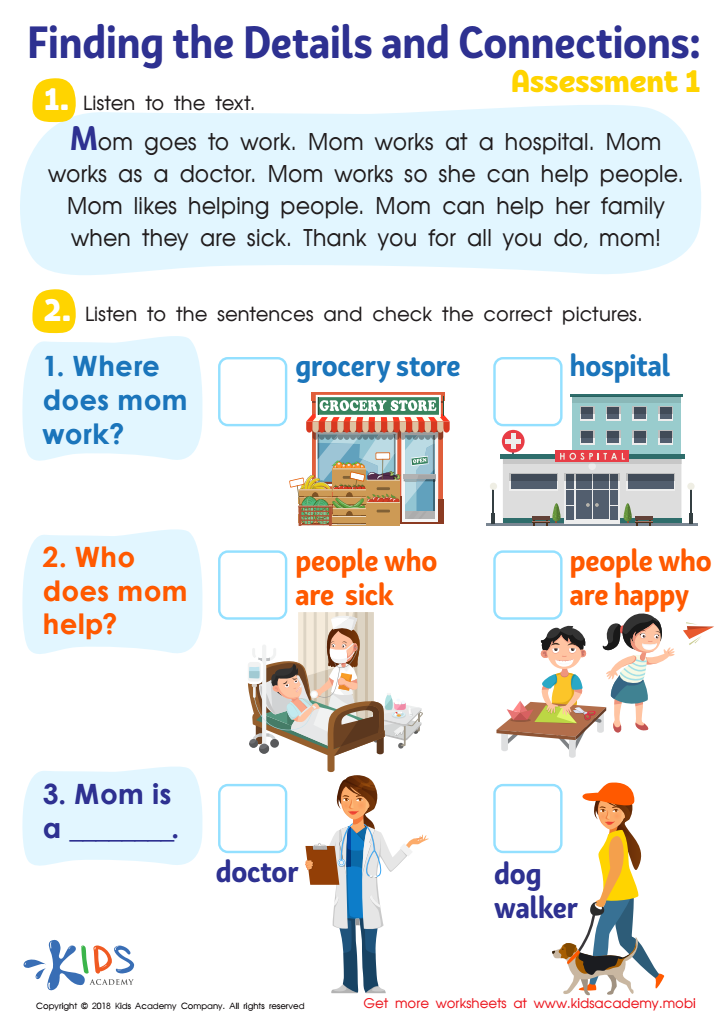

Finding the Details and Connections: Assessment 1 Worksheet
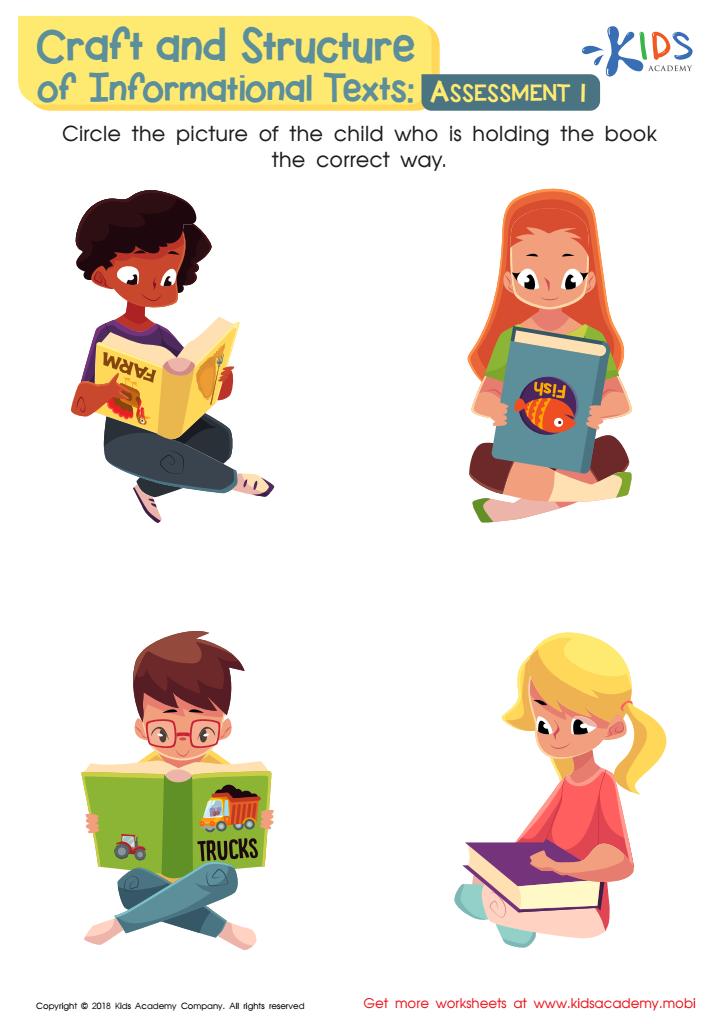

Craft and Structure of Informational Texts: Assessment 1 Worksheet
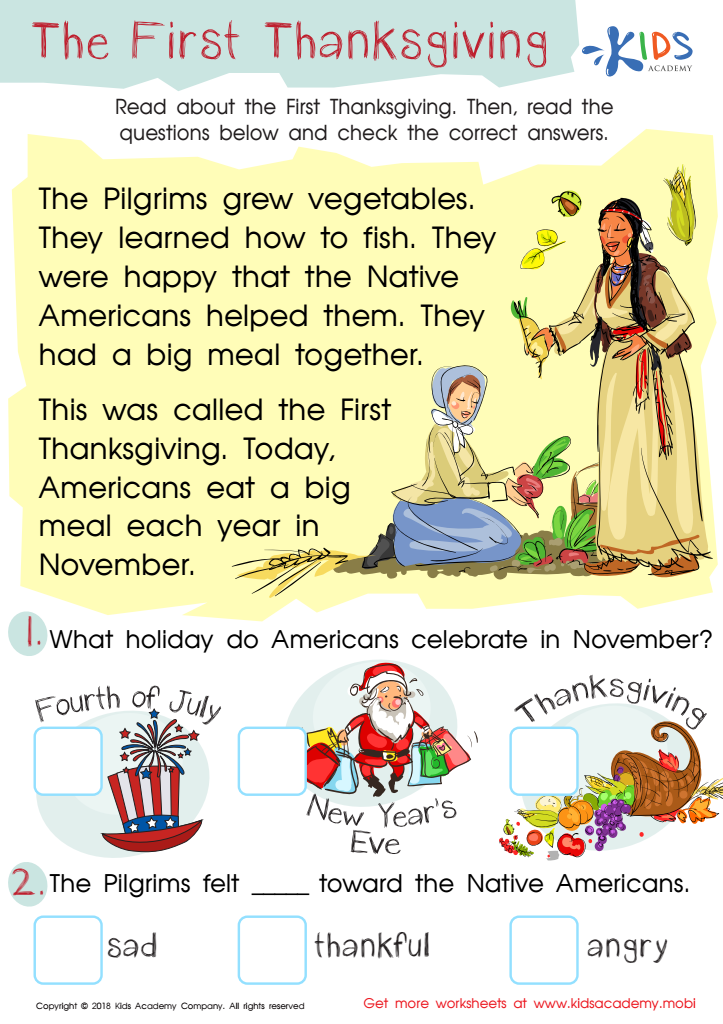

Assessment: First Thanksgiving Worksheet
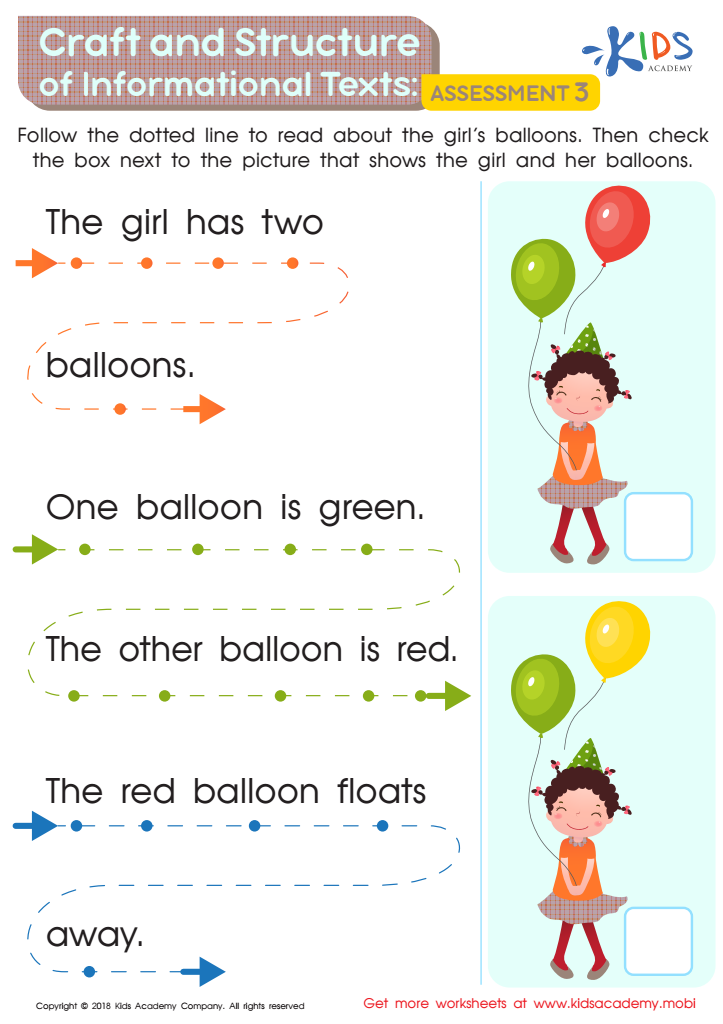

Craft and Structure of Informational Texts: Assessment 3 Worksheet
Parents and teachers should prioritize normal reading comprehension activities for children aged 4-7 as they lay the foundation for lifelong learning and academic success. At this critical stage, children are not only developing their reading skills but also beginning to understand and interpret texts, which are essential for cognitive growth.
Engaging in reading comprehension activities helps young learners enhance vocabulary, improve sentence structure, and develop critical thinking skills. These activities often involve questions that prompt children to think about the characters, settings, and events in a story, encouraging them to make connections and process information deeply. This early interaction with texts also fosters emotional intelligence as children relate to different characters and scenarios.
Furthermore, cultivating strong reading comprehension skills during these formative years boosts children's confidence and enthusiasm for reading. It can make the transition to more complex texts smoother as they progress in their education. Additionally, parents and teachers who participate in these activities create a supportive learning environment, reinforcing the importance of literacy and encouraging a love for reading from an early age.
Ultimately, investing in reading comprehension at this stage significantly contributes to children’s overall development, preparing them for future academic challenges.
 Assign to My Students
Assign to My Students




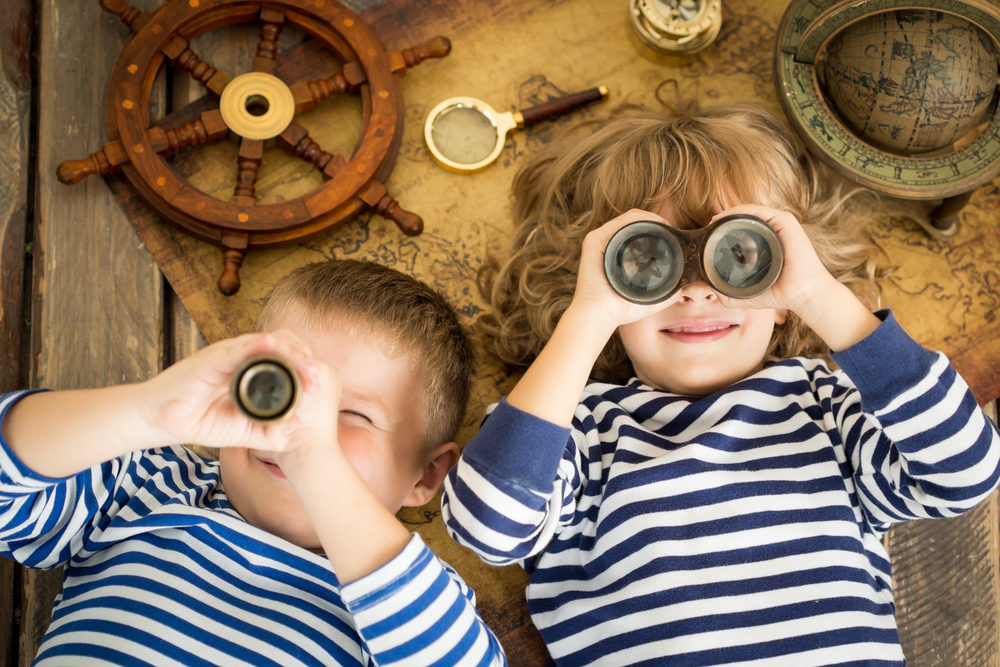



.jpg)
